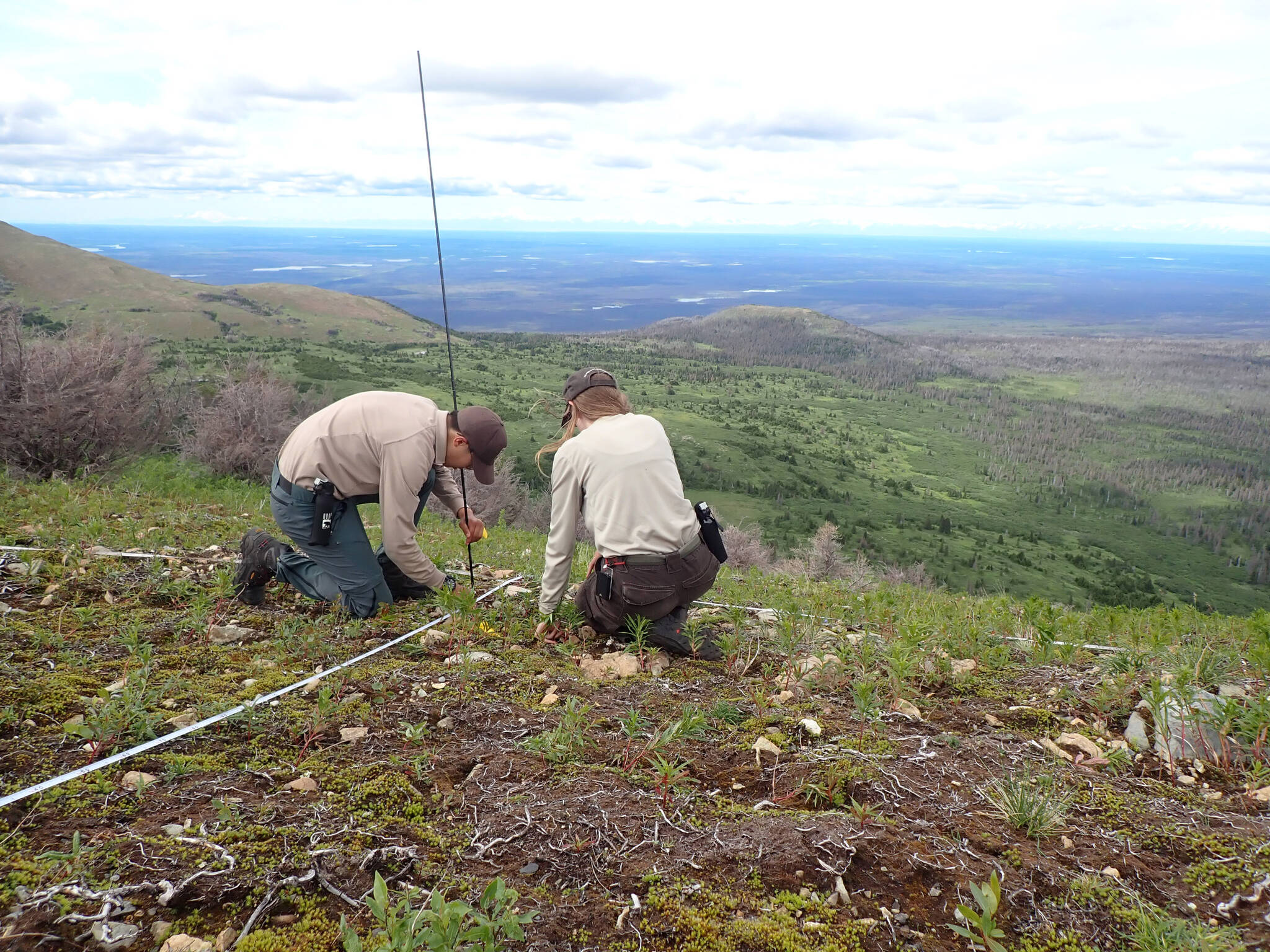The promise of longer days arrived in February, just when I needed it. Lately, my days are filled with the necessary minutia of work, and the practice of conservation finds moments too rare to sneak in between. I find myself wondering — do we contribute? Is this field of conservation enough? Will the work endure?
A few days later, a previous summer seasonal intern gave me an answer when she shared pictures from six months ago. Each picture told the story of her summer.
They showed that she participated in work that contributed to the things we all care about on the Kenai National Wildlife Refuge.
She and the summer field crews spent time in the Kenai’s jaw-dropping scenery, as pictures held mountains, oceans, wildlife and fish. Other images captured the pride of doing something she probably once thought she was incapable of doing — hard hours with a saw clearing trails so others could have an easier path.
Through it, all the joy of the outdoors was visible. It captured friendships from newfound teammates and a plethora of experiences fanned out in the photos — experiences only possible from this seasonal job, all creating memories that won’t be forgotten and shape lives.
The pictures that gave me meaning didn’t come from a seasonal on my team but from the Visitor Services trail crew. Still, photos from the biology summer field crew are posted around the whiteboard calendar in our team’s conference room, reminding us that our work is as much about people as it is about place.
These experiences roll out across all our departments on the refuge, from Fire, Visitor Services, Biology and Maintenance.
Our crews perform fuel management treatments, provide wildfire prevention and education, and fight wildland fires to protect our communities from wildfires. These crews typically have one or two wildland fire apprentices getting on-the-job training and experience to work toward becoming journey-level wildland firefighters.
The refuge is in the process of hiring a summer trail crew that will brush out over 200 miles of hiking and canoe trails and work to repair some of our well-used and loved hiking routes in the Skilak Wildlife Recreation Area this season.
The cabins crew will visit all our public-use cabins and perform essential maintenance and improvements. At the same time, our seasonal park rangers will patrol campgrounds, lead hikes and visit with the thousands of visitors on the refuge each day.
Our summer seasonals on the biology team will find themselves mostly in the field but will also have time at the office. We have an invasive species strike team that will visit remote lakes hoping to document that they remain free of elodea and non-native northern pike.
They will collect and review thousands of images from remote aerial photos and trail cameras to document how habitat conditions and wildlife abundance change over time, and the use of wildlife crossing structures reduces wildlife-vehicle collisions, keeping people and wildlife safe.
In midsummer, when the alpine vegetation is at its peak, the biology team will traverse steep slopes to document how the type, amount and nutritional content of alpine plants respond to the Swan Lake Fire and might improve conditions for Dall sheep.
Later, they will assist in collecting water temperature and water flow data to help us understand how water changes and impacts salmon, and how beaver dams could improve water conditions, so salmon, a species that begins and ends its life on the refuge’s waters and is the heartbeat of the community, can endure as conditions change.
As we select our seasonal crews for the upcoming summer, those who return and those who are new will prove that the work we do here might not be entirely enough, but it contributes and is lasting.
It will be seen in the trails and cabins built and maintained, the preparedness for wildfire, the data collected from water samples and the wildlife and habitat surveys, and in the lives of this next generation of stewards of these lands, waters and wildlife.
So that people can continue to enjoy the refuge’s natural beauty and bounty in this place so aptly named by the Dena’ina — Yaghanen, the “Good Land.”
Kris Inman is the Supervisory Wildlife Biologist at the Kenai National Wildlife Refuge. You can find more information on the refuge at http://kenai.fws.gov or http://www.facebook.com/kenainationalwildliferefuge. The Refuge Notebook is published twice a month, and you can find past Refuge Notebook articles at https://www.fws.gov/kenai-refuge-notebook.

